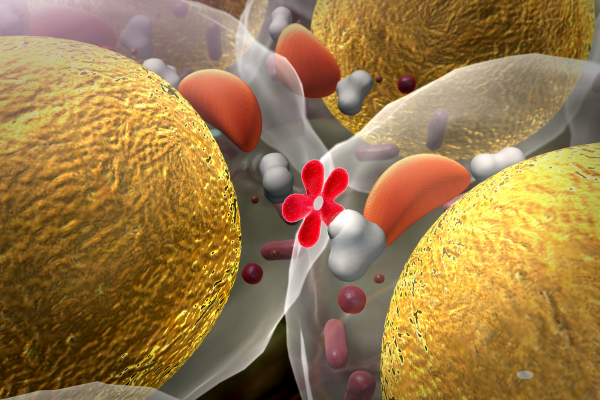One of the world’s most popular diets currently being practised is the intermittent fasting (IF) diet. Some say it has simplified their lives, helped them lose weight, and improved their health.
What is intermittent fasting?
Intermittent fasting (IF) is a type of eating pattern where you only eat at a designated time. You follow a pattern of regular eating and fasting periods. Regular fasting, irrespective of daily or weekly fasting, promotes fat-burning in your body.
Types of intermittent fasting
- Alternate day fasting (ADF) – It is a recommended strategy that involves calorie restriction rather than a complete calorie elimination. It involves fasting every other day, limiting your daily caloric intake to only 30% of what is normally advised, and on non-fasting days, returning to a calorie intake suggested for your age, gender, and goal weight. To prevent dehydration during such fasting days, it is advisable to drink plenty of water and broth. For those whose job schedules do not allow them to eat regularly due to a hectic schedule, this kind of fasting may be suitable.
- Eat stop eat (ESE) – ESE is a calorie-free 24-hour fast that is performed once or twice a week, wherein a person eats normally and fast for 24 hours and the very next day they return to normal eating. This is usually not preferred by many.
- 5:2 diet – In the 5:2 diet, generally people fast for two days out of every seven days, consuming only 500–600 calories during those days.
- 16:8 diet – The 16:8 diet, sometimes referred to as the leangains diet, comprises eight hours of eating, followed by a 16-hour fast. Most choose to eat between midday and eight o’clock at night, which means that most of their fasting time is spent during sleep.
- Water fasting – This method involves drinking only water for a fixed period, as the name suggests. Although popular, water diet is done as part of a detox diet. However detox diets are ineffective in the long run and can even be harmful for health.
- Juice fasts – Juice fasts are the practice of consuming fruit or vegetable juice during fasting period. Because the sugars in juices might affect blood glucose levels, it is not advised if you are managing your diabetes or are at risk of developing disease.
- Partial fasting – With this method, you exclude specific foods or beverages from your diet on a regular basis for a predetermined period of time, such as a few days, weeks, or months. Processed foods, sugar, soda, and caffeine are popular categories.
- One meal a day (OMAD) – OMAD is a fasting method that involves having only one large, high-calorie, nutrient-dense meal every day. In this method it is advised to eat one meal within an hour and then for the next twenty-three hours only take zero-calorie food or drinks.
How does intermittent fasting work?
The intermittent fasting works by limiting food intake. Our primary source is glucose from carbohydrates but our body uses fat as a source of energy when there is an absence of carbohydrates.
There are several methods for observing an intermittent fast. There is no “perfect” fasting schedule; instead, your dieting should be based on what suits you the most.
Benefits of Intermittent fasting
Researchers studied intermittent fasting, which improves metabolism and lowers blood sugar and a wide range of health issues.
- Reduces brain fog by metabolising stored fat for energy (through ketosis) instead of glucose.
- Reduces the risk of diabetes – It controls blood sugar level and reduces body’s resistance to insulin, the hormone that helps to control the amount of sugar in the blood.
- Weight loss and loss of visceral fat (the fat around the abdomen)
- By regulating the circadian rhythm it improves sleep and digestion.
- Intermittent fasting protects the heart by reducing blood pressure and improves cholesterol levels.
- Reduces inflammation which helps improve conditions such as arthritis, multiple sclerosis, and asthma.
- Intermittent fasting helps to remove waste material from cells.
- Research shows that intermittent fasting may help reduce the side effects of chemotherapy.
Intermittent fasting tips
- Before beginning any dietary regimen, consult your primary healthcare physician.
- Be active throughout the day to build muscle tone and burn fat.
- The fasting period should not be too long (24 hours or longer) if the body adapts to a starvation state then it may store the fat instead of burning it.
- During fasting, you can consume water and low calorie drinks like black tea and coffee.
- Try to eat earlier in the day, not in the evening or right before bedtime.
- Try to stick with healthy eating which contains a plant-based or Mediterranean-style diet.
Who should avoid intermittent fasting?
- Children under the age of 18
- Individuals with a past history of eating disorders like anorexia or bulimia.
- Pregnant and breastfeeding women
- People with advanced disease or on medication for diabetes.
Conclusion
There are various methods of fasting, intermittent fasting is considered safe and effective.
An intermittent fasting schedule adheres to predetermined timings rather than fluctuating. However, each person’s experience with intermittent fasting is different, and different strategies will be suitable for different people.
Nesha Felciya,
Clinical Dietitian, Simplyweight





